The peaceful suburb of Glencoe, Illinois is home to the esteemed Chicago Botanic Garden. More than one million people visit each year, but they’re not just seeking uplifting garden inspiration. They’re visiting to see first-hand the discoveries of one of the nation’s most respected plant science hubs.
Here, thousands of plants are trialled for their hardiness, seasonality, and ornamental value to find superior varieties for Midwestern gardens. It’s a unique opportunity to step into the midst of industry-leading research, as Chicago Botanic Garden’s three evaluation gardens are open for the public to explore. Unlike field trials with uniform rows of planting, these plants are under observation in a real garden setting, tested in an environment that reflects their intended final destination.
Best picks for you
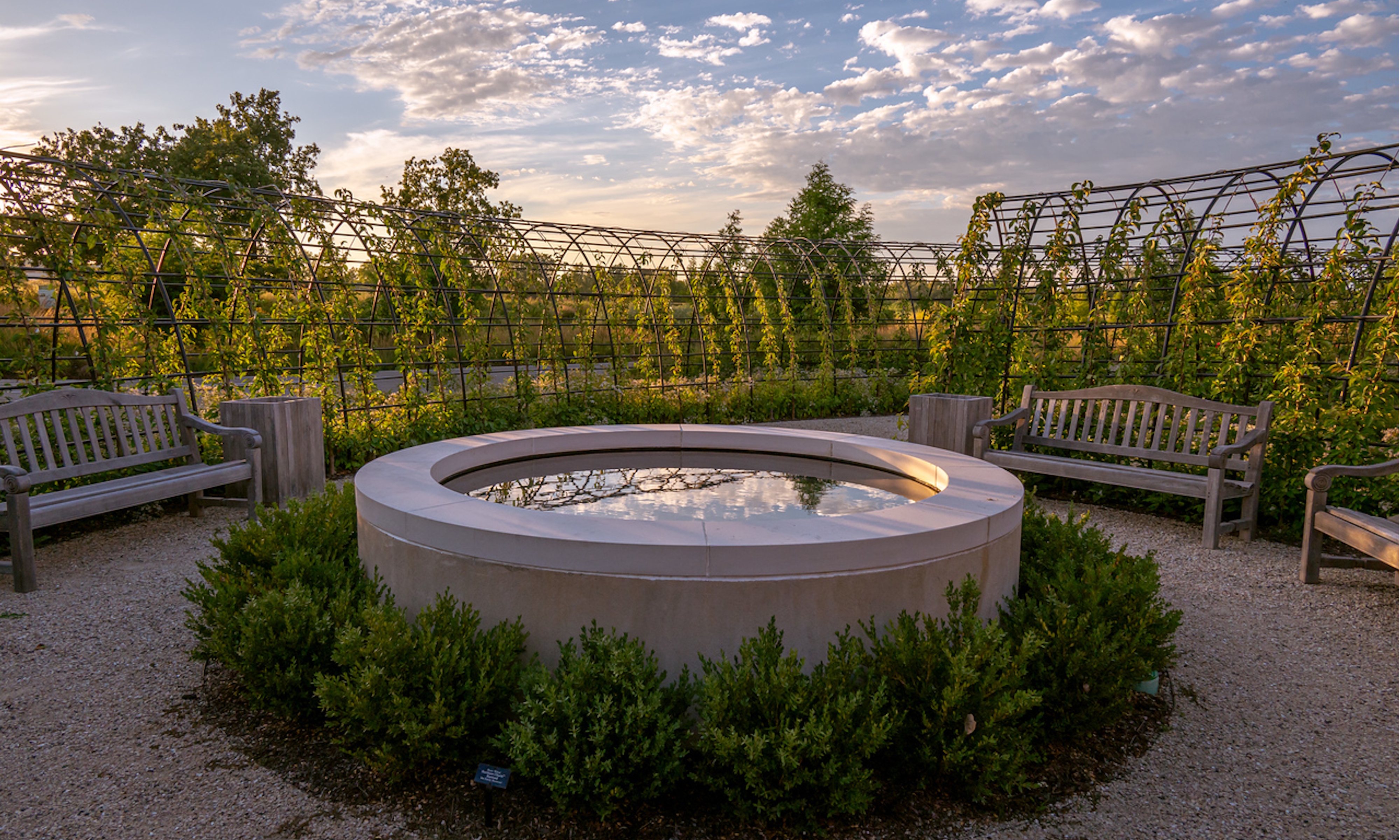
Crab apple tunnels curl around a tranquil seating area with a raised pool
(Image credit: Chicago Botanic Garden)
Color refusing to fade: Shida’s vibrant winter welcome
Each of the evaluation gardens at Chicago Botanic Garden serves a different purpose. The Bernice E. Lavin Garden focuses on sun-loving plants, the Green Roof Garden looks at plants for this challenging urban environment, and Shida was designed with an emphasis on shade garden plants, though sunnier perennials also have a place here.
‘It’s painted by trees for fall color at this time of year,’ says Fred Spicer, Executive Vice President and Director at Chicago Botanic Garden.
‘You get all these russet tones from the dawn redwoods and bald cypress. The beeches, hornbeams, and crab apples display yellows ranging from dirty to brilliantly bright.’
Although completed in 2021, the concept of Shida was born in 2013 when Belgian designer Peter Wirtz pitched the idea of an immersive plant testing space. The following eight years saw Peter shape his vision into reality, bringing together meandering paths, sculptural hedges, and a sequence of garden rooms for different trial spaces.
Yews and dawn redwoods cast shade for trialling shade-lovers and woodland plants, while sun-filled beds allow for additional trialling of perennials, like roses.
‘These garden zones act as microclimates, so we can somewhat push boundaries,’ says Richard Hawke, Director of Ornamental Plant Research at Chicago Botanic Garden.
‘For example, we can place more tender plants behind an evergreen hedge that blocks the wind, and we can test shade plants beneath the trees – something we’d never be able to test in the sunnier evaluation gardens,’ he notes.
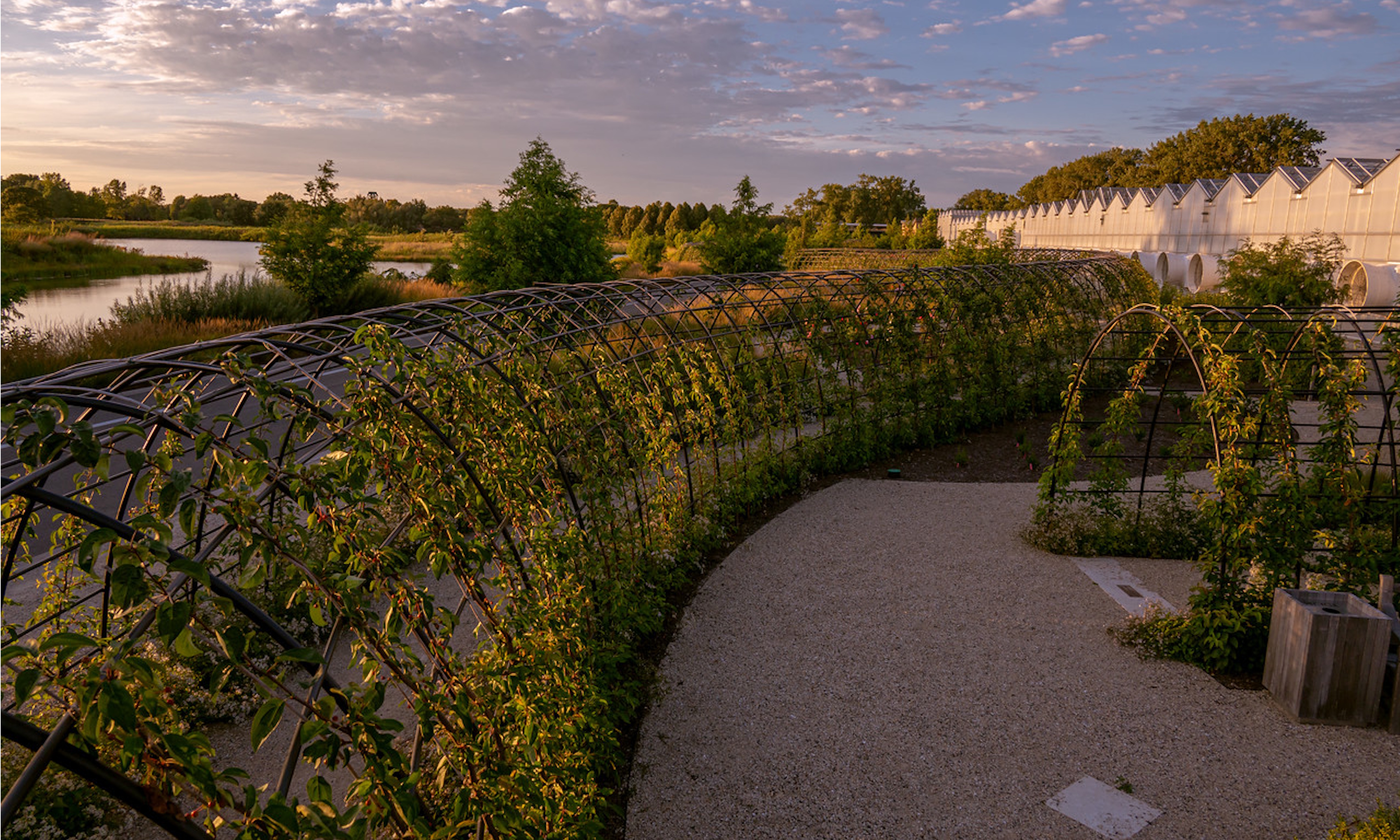
The crab apple tunnels create winding pathways through the Shida garden
(Image credit: Chicago Botanic Garden)
The permanent hedges and trees guide visitors through the garden, while curving crab apple tunnels and staggering hornbeam arbors interrupt the sightline, lifting your attention upwards.
‘I love how these impressive structures really shine in the winter, even if they look stripped down as some of the deciduous trees lose their leaves,’ says Fred. ‘They speak to the architecture of the nursery greenhouses that sit on the other side of the garden,’ he adds.
The Shida Evaluation Garden is found right in the heart of Chicago Botanic Garden’s plant science area. Adjacent, greenhouses are home to the garden’s plant breeding and conservation efforts.
On the southern side, the garden’s signature large mounds of ornamental grasses interrupt these sharper silhouettes with soft texture and movement.
‘We selected Molinia, or moor grass, because it stood out in one of our previous ornamental grass trials for its hardiness,’ Fred explains. ‘Even in snow it didn’t collapse.
‘Peter Wirtz has such a way with words. He likens the mounds of grasses to cats sleeping on the lawn. He wants you to walk past and brush their tails, and for them to brush your legs. That’s why they stand so tall and proud,’ he describes.
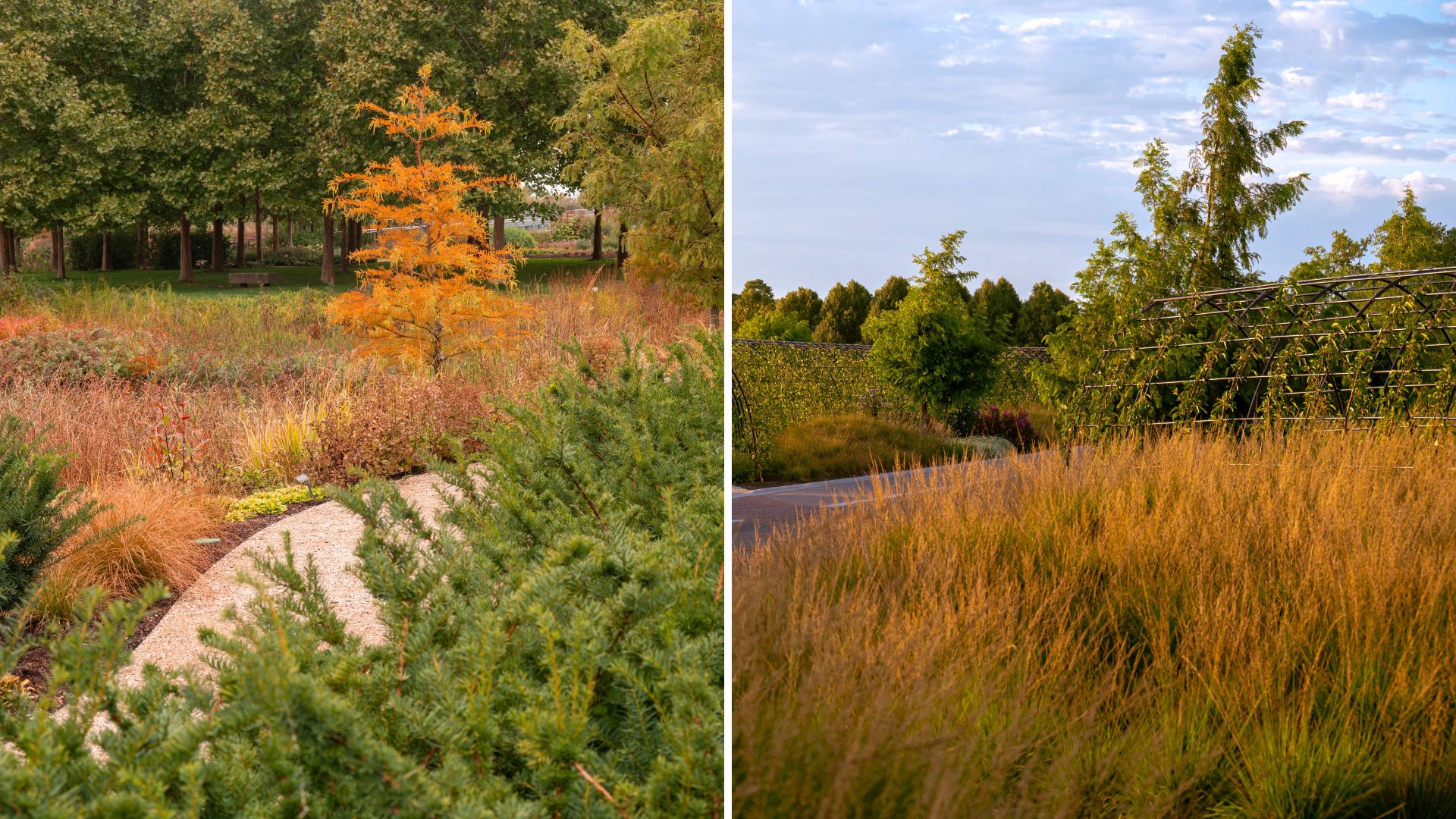
Fiery hues takeover the landscape in fall
(Image credit: Chicago Botanic Garden)
There’s a sensory aspect to appreciate at Shida during the coldest months.
‘Much of the garden is exposed to the elements, so we see an impact of wind from the west. Tree foliage rustles in the breeze, which creates a soothing sound,’ Fred describes.
Perhaps the most unusual feature of the Shida garden is its location. It’s a long, narrow garden measuring approximately 2.98 acres, divided in the middle by a road with a public access bike path.
Peter’s design incorporated the road into the garden, with intentional winding paths crossing it at regular intermissions to seamlessly unite the space.
‘It’s really designed as a landscape,’ says Richard. ‘The brief was to create a permanent framework that would be attractive and dynamic in its own right, and in which we would regularly switch out different varieties to observe.
‘It’s a far more valuable experience for homeowners to see how plants perform in a garden setting rather than an open testing field,’ he adds. ‘It’s a more realistic representation of which plants come out on top in this climate.’
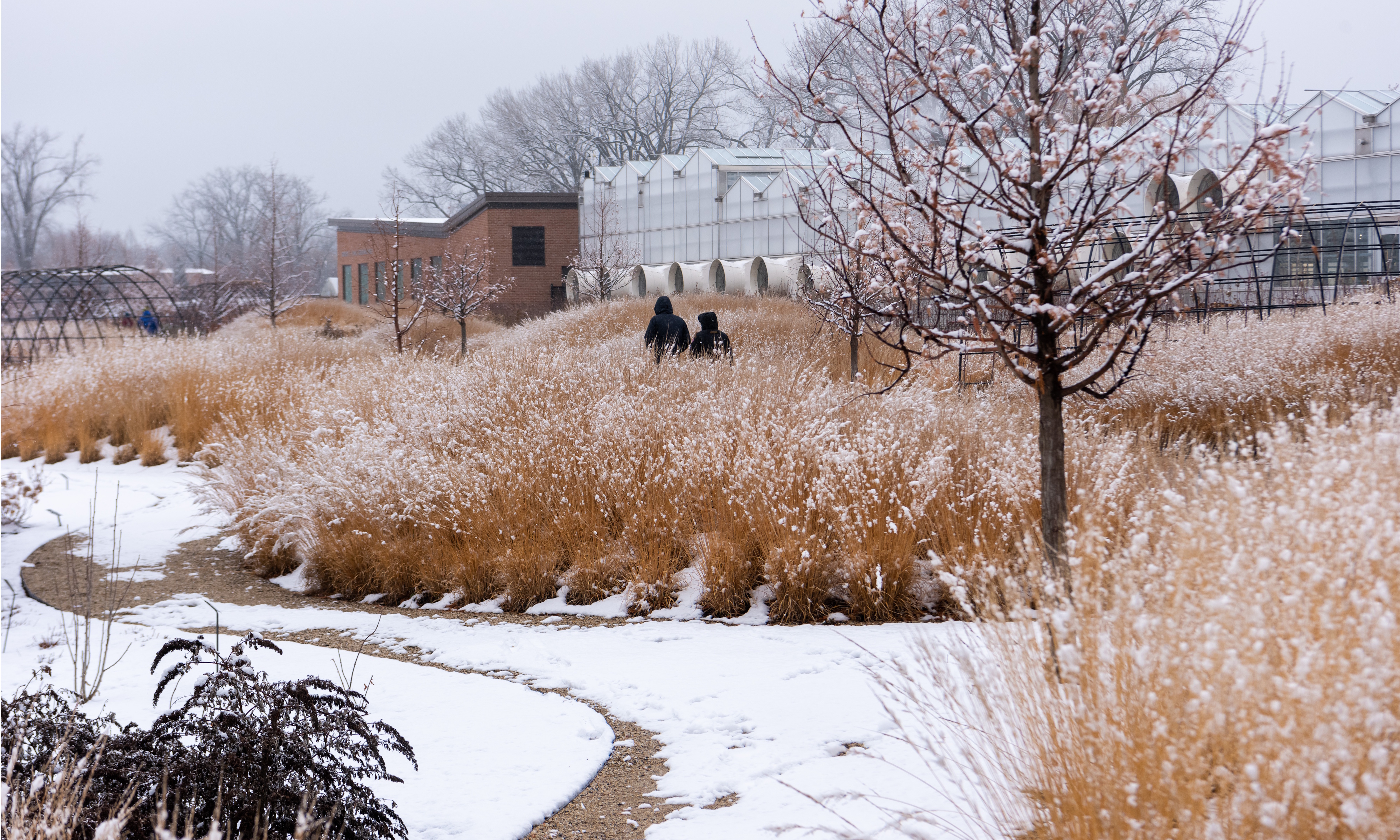
Snow softly sits on top of the moor grass mounds in winter
(Image credit: Chicago Botanic Garden)
Spring and summer delights: when Shida’s collections awaken
When temperatures warm up after winter, it marks an important checkpoint for the evaluation team at Chicago Botanic Garden.
Perennials start to emerge, buds start to form, and the garden begins revealing the strongest specimens to have survived winter.
With the garden being just four years old, many of the plants are still young and trials are yet to be completed. Though, some exciting findings are beginning to come out of the woodwork.
‘The highlight so far has been the hellebore collection, which wasn’t widely grown here for many years,’ says Richard. ‘Breeding in our climate zone (US hardiness zone 6) has now made this possible.
‘It’s opened my eyes to the fact we can grow so many types of hellebore and don’t have to stick with just three or four seed-grown types,’ he adds.
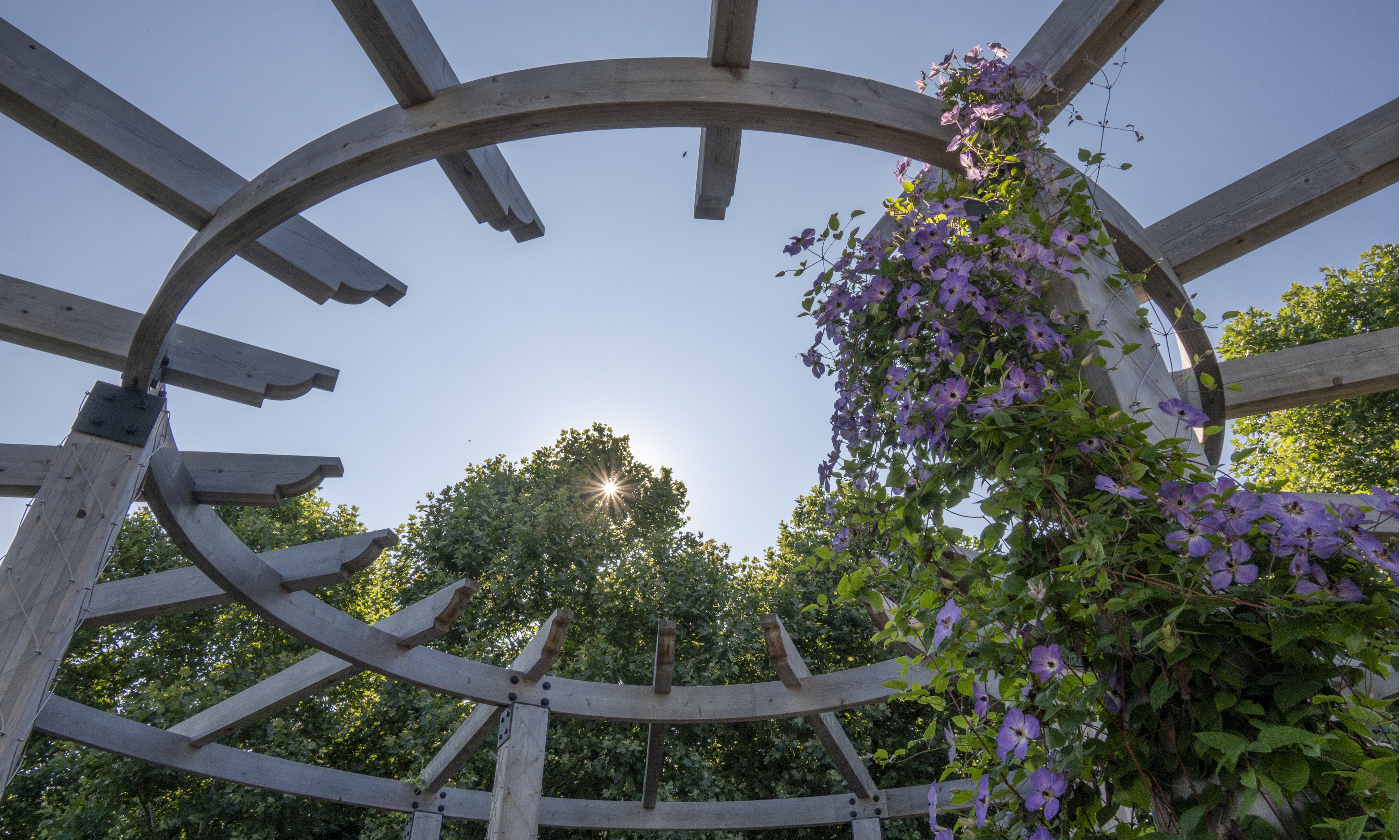
Wooden pergolas are covered in flowering climbers like clematis
(Image credit: Chicago Botanic Garden)
Fred expresses his excitement for the crab apple performance this coming spring.
‘They’re really just starting to hit their maturity, so I think we’re going see those tunnels almost completely covered with flowers and foliage,’ he shares.
Though the evaluation program is extensive, with a current 26 ongoing trials (clematis, hydrangeas, crab apples, heucheras, and more found in Shida), there are also some limitations of what can be tested at Chicago Botanic Garden.
‘The flowering cherries are a stretch, but we have straight Yoshino cherry planted on the south side which is doing phenomenally, just hitting maturity in terms of flowers,’ Fred says.
One of the secrets behind the rigour among the plants in Shida is the fact the garden was built from scratch.
‘We have a sustainable soil initiative where we are managing soil health as well as plant health. It’s about creating the best environment for plant roots because if they’re healthy, what’s above ground can be really resilient,’ Fred says.
‘Shida was a blank canvas, which meant we could create this bespoke soil profile to support the plants we intended to grow here. It’s a proprietary blend, with a certain sand, local topsoil, and other local elements, as well as a highly bioactive compost,’ he explains.
Establishing a healthy soil ecosystem like this encourages nutrient cycling to happen naturally, reducing the need for chemical fertilizers and pesticides.
‘It’s an organic style of maintenance,’ Fred adds.

‘When you’re in the garden, the road is screened entirely. You’re transported to a whole new setting’ – Fred Spicer, Executive Vice President and Director at Chicago Botanic Garden.
(Image credit: Chicago Botanic Garden)
There’s plenty of opportunity for visitors to soak up spring garden galore in the Shida Evaluation Garden, as the team have worked hard to naturalize bulbs.
‘There are about 20,000 creamy yellow daffodils that come out of the ornamental grass mounds in the spring. It’s a real statement,’ Fred describes.
Clematis also impresses, painting wooden pergolas in hues of white and purple from late spring to fall. These structures were put in by Peter as a dedicated space to test the best climbing plants.

Clematis vines turn pergolas into living sculptures
(Image credit: Chicago Botanic Garden)
Fred and Richard point out one of the most popular features among visitors is the rose trial.
‘We evaluate many roses and work with lots of rose breeders who are looking for new varieties to introduce on the market,’ Fred explains.
The roses are planted en masse in sunny flower beds, blooming through the summer months.
‘It’s certainly a magnificent sight, and the fun part is a lot of them don’t have names yet,’ Fred says. They’re being bred for the best ornamental, hardiness, and disease-resistant qualities. Eventually the winners will come out and be given names by the breeders,’ he explains.
One particularly interesting rose evaluation happening here is for the American Rose Trials for Sustainability
‘The goal is to essential do nothing to the roses,’ Richard says. ‘If it does great on its own, it’s a good plant.
‘This is really the aim of all of our trials, to not do much to them. If they succeed in whatever place we put them, they’re quality plants. Struggling plants are equally valuable to us as data points,’ he notes.
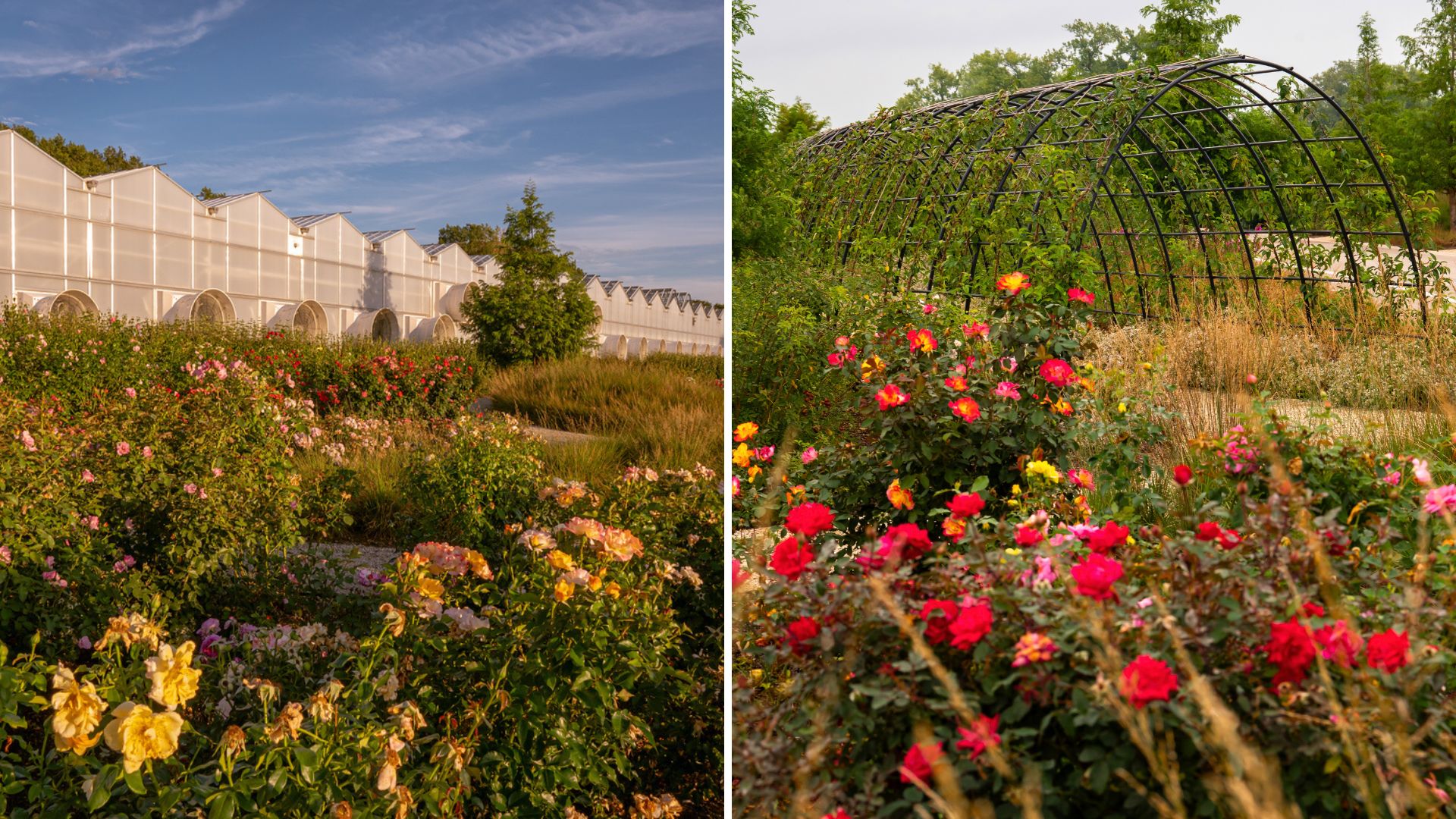
Roses of all colors are on display through the summer months
(Image credit: Chicago Botanic Garden)
The art of evaluation: more than just a trials space
Peter’s vision of an evaluative space embedded in an uplifting garden with year-round beauty has certainly prevailed. It’s a space visitors come to appreciate just the same as the ornamental gardens Chicago Botanic Garden.
‘I see people sitting in the arbors, reading and relaxing. Even though it’s not the largest of our gardens, the winding paths allow you to get lost for a few moments,’ Fred describes.
‘We also get a lot of people who are not specifically visiting Chicago Botanic Garden because of the public access bike path that cuts through it,’ Richard adds.
‘We watch them stop by and enjoy the garden, meandering down the paths and walking through the tunnels,’ he says.
Adding to the feeling of escapism is the fact Shida is located right next to the botanic garden’s lake system – a manmade lake measuring 60 acres. It’s a nod to the origins of Chicago Botanic Garden, built on the site of a marshland, and plays a key role in the garden’s work around habitat restoration and ecosystem conservation.
‘Being greeted by the water’s edge in Shida provides another peaceful space to escape to,’ Fred says.

A lakeside, public road, and the long, narrow nature of the garden make Shida a unique spot to explore
(Image credit: Chicago Botanic Garden)
‘I’ve found it fascinating to hear why the public enjoy this trials space in particular. It’s largely because it reads well as a garden landscape, rather than a plant testing space,’ Richard explains.
‘It makes them more inclined to take a closer look at what’s on trial and they become curious to see for themselves what’s performing well.
‘It’s the exact reason we first selected Peter’s concept: to unify the evaluation plants with the setting. Showcasing their beautiful colors and shapes has proven to be an invaluable way to engage visitors with our research, who walk away with new planting ideas for their own gardens,’ Richard adds.
Ideals to steal from Shida
There’s no doubt the Shida Evaluation Garden is bursting with inspiration for home gardeners, so we’ve compiled our top three take aways:

Many visitors walk through Shida to take in the peaceful surroundings
(Image credit: Chicago Botanic Garden)
Use ornamental grasses as a foundation for planting
Grasses are often one of the most underrated elements of planting schemes, but if there’s anything Shida proves, it’s that landscaping with ornamental grasses gives you a strong foundation year-round.
Choose flowering grasses like feather reed grass (see the collection at Nature Hills) and miscanthus for blooms spring-fall, and watch as switch grass and fountain grass turn bronze in the coldest months.
Give a bit more love to garden structures
It can be easy to become plant-happy when caught up in the buzz of a garden center, but don’t forget to make room in your yard for impressive structures.
While you may not have a yard sizeable enough for the breath-taking tunnels and arbors at Shida, you can use things like garden trellises and smaller arches (like this one from Amazon) to achieve the same effect. Covered in climbing plants, these structures will turn into living sculptures.
Embrace the winter garden
Without the orange, yellow, and brown hues of the deciduous trees and fading perennials, the winter garden at Shida would stand bare.
That’s why it’s important to hold off on picking up your pruning tools and cutting back plants in fall. Instead, let seedheads take form, enjoy the changing foliage color, and sit back to watch your yard’s landscape transition with the changing seasons.
Beyond Wild Expectations is a new series exploring exceptional public gardens of every scale, from grand formal parterres to intimate community plots. We reveal the design vision, planting choices and defining details that bring the garden to life, and show how each one gives fresh perspectives on how we connect with nature and outdoor living.
 Fred Spicer
Fred Spicer
Social Links Navigation
Executive Vice President and Director at Chicago Botanic Garden
Fred Spicer is executive vice president and director of the Chicago Botanic Garden. Spicer’s role entails the stewardship of the living collections of the Garden within the context of its designed landscape and its 28 display gardens, along with the development and management of its buildings and other structures. Spicer oversees all facets of horticulture, facilities planning and maintenance, and capital projects, with a focus on integrating new elements with the Garden’s established design style and vocabulary.
 Richard Hawke
Richard Hawke
Social Links Navigation
Director of Ornamental Plant Research at Chicago Botanic Garden
Richard Hawke is the Gaylord and Dorothy Donnelly Director of Ornamental Plant Research at the Chicago Botanic Garden, where he oversees the plant evaluation, plant breeding, and plant introduction programs. He has managed the plant evaluation program since 1986.
TOPICS
Beyond Wild Expectations

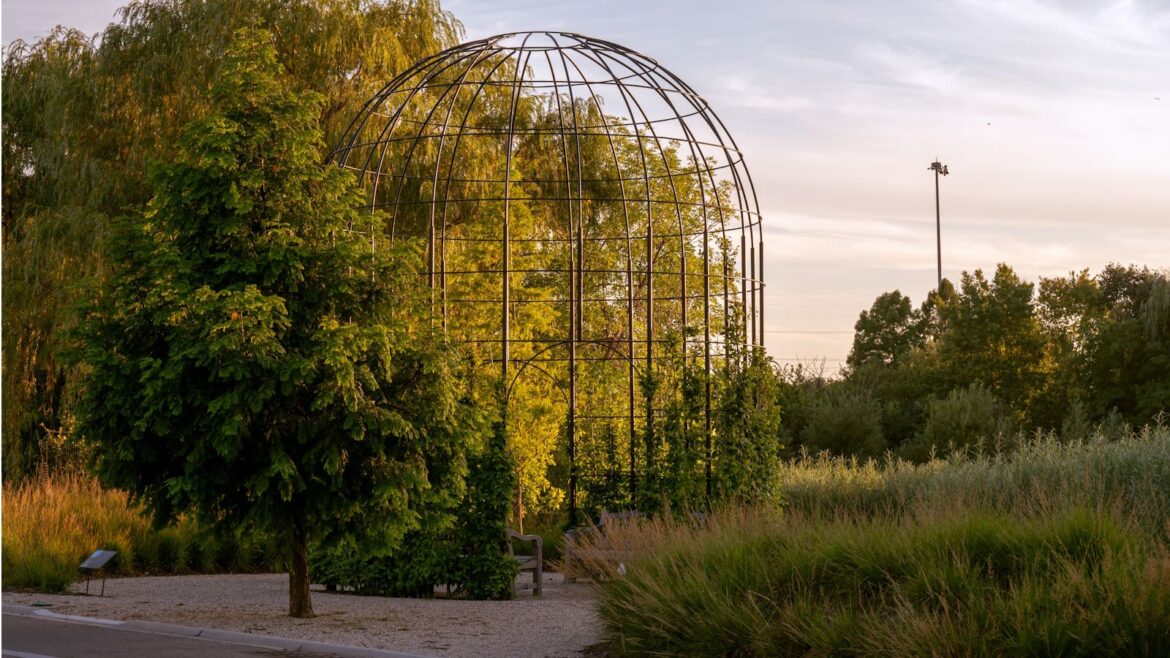
Comments are closed.